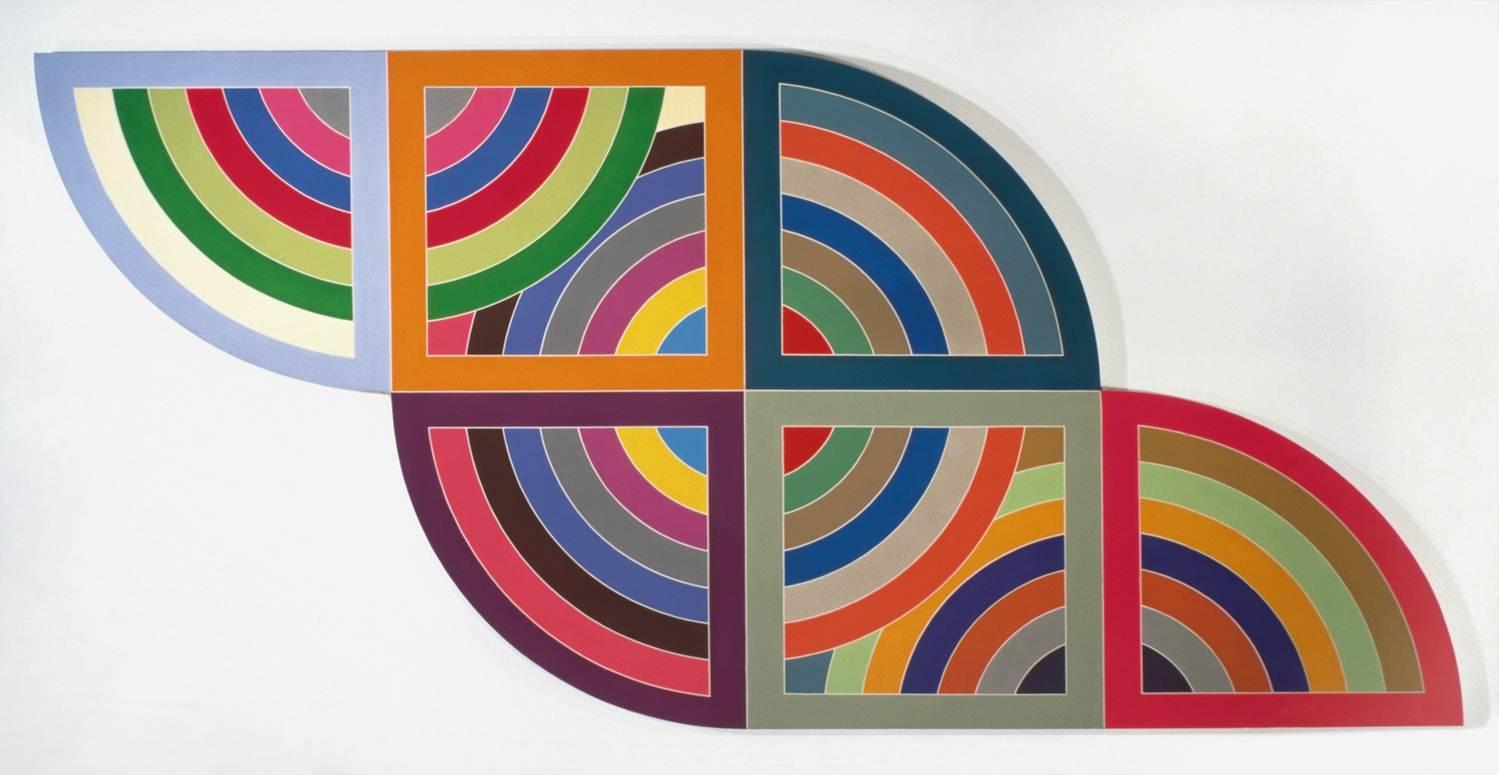
Ecliptic, Julian Stanczak, 1970
“Op Art”, an artistic movement focused on optical illusions, began in the 1960’s. Artists such as Frank Stella, Ed Mieczkowski, and Julian Stanczak were fascinated with the study of perception.

The Marriage of Reason and Squalor, II, Frank Stella, 1959

Harran II, Frank Stella, 1967
Frank Stella’s “Black Paintings” served as a separation from the emotional Abstract Expressionists before him. Stella’s work is not personal. Instead, he positioned himself as a nonrepresentational painter focused on the principles of design. He created the “Black Paintings” by carefully applying house paint to the canvas in parallel lines with minute white spaces between the stark black strokes. By choosing to paint the negative space as opposed to th positive, the figure-ground relationship within the work becomes more complex. As Stella’s body of work evolved he transitioned into painting multicolor shapes, using color theory to accentuate the apperance of illusion in the work. The shapes were painted in a color-block fashion and carefully filled with advancing and receding colors. While the compositions in works such as Harran II offer the viewer a vast depth of field, Stella contradicts this illusion by cutting the canvas flush to the shapes which flattens the dimentional work.

Fanfare, Ed Mieczkowski, 2007
Ed Mieczkowski was one of the three founding fathers of the artist collective “Anonima”, along Frank Hewitt and Ernst Benkert. The group was dedicated to the research and teaching of drawing practices focused on dimensional geometric shapes. Mieczkowski’s work, like Stella’s later paintings, uses the study of color to create the illusion of space.

Uninterupted Brown, Julian Stanczak, 2005
The Op Art movement credits Julian Stanczak for its name, an adaptation from the title of his 1964 show Julian Stanczak: Optical Paintings. Stanzak’s work has a stronger sense of movement than Stella and Mieczkowski. He exercises a different color theory principle- vibrating colors. Stanczak’s fine line paintings each have their own unique set of color palettes that push the boundaries of illusion, ultimately creating the appearance of movement. In his artist statement he claims that his art "does not echo the natural world. It does not detail visual experiences. His art does what art is supposed to do, it amplifies life’s experiences".